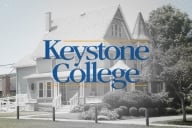You have /5 articles left.
Sign up for a free account or log in.
WASHINGTON -- The House of Representatives Committee on Education and the Workforce approved legislation Thursday that would create a variable interest rate for student loans. The measure faced strong opposition from Democrats on the committee, who argued for a bill that would keep interest rates at their current levels for the next two years, as Congress works to reauthorize the Higher Education Act.
The interest rate on subsidized Stafford loans, need-based loans for undergraduates that don’t accumulate interest while students are enrolled in college, will double to 6.8 percent July 1 if Congress doesn’t act. The increase, planned in a 2007 law that gradually lowered student loan interest rates over four years, was supposed to occur last year, but Congress passed a one-year extension to keep the rate at 3.4 percent for another year. (Unsubsidized student loans, which are available to students regardless of need, already have an interest rate of 6.8 percent.)
Members of Congress and the administration have proposed varying plans for adjusting how interest rates are set in the long term. Most, including a plan from the Obama administration, would link the rate to the cost of borrowing, tacking on a few percentage points to the 10-year yield on Treasury notes.
The unusual accord between plans from Congressional Republicans and the Democratic administration made a long-term compromise -- however rare on Capitol Hill these days -- briefly seem possible. But Congressional Democrats have said they’d want to tackle an interest rate overhaul when they rewrite the Higher Education Act, the law governing student aid programs, which expires at the end of next year, and not under the gun of a July 1 deadline.
That dynamic -- Republicans who want to push ahead on a long-term overhaul, with Democrats urging caution -- was evident when the committee met Thursday to debate the legislation. The bill, H.R. 1911, would tie the interest rates on student loans to 10-year Treasury bills plus 2.5 percentage points for Stafford loans for undergraduates, and plus 4.5 percentage points for PLUS loans for parents and graduate students.
The interest rate would vary over the life of the loan, meaning students would be paying many different rates over time as interest rates rise and fall in the broader economy. Rates would be capped at 8.5 percent for Stafford loans and 10.5 percent for PLUS loans.
The variable rate was a particular concern for Congressional Democrats. Proposals from Republican Senators and the Obama administration would switch to rates that vary from year to year for new loans, but are fixed over the life of the loan, so students know what rate they will pay until they are done with repayment.
Lawmakers argued the House Republican legislation amounted to a “bait and switch” since interest rates are historically low now but are expected to rise in the coming years. So while students taking out loans this fall might get a very low rate, that rate will rise as the economy improves and interest rates increase, they said.
An analysis from the Congressional Research Service, using interest rate projections from the Congressional Budget Office, found the average subsidized borrower would pay more under the House Republican proposal than he or she would if interest rates were allowed to increase to 6.8 percent.
Republican members of the committee argued that their legislation would make the rates, currently set by law, more predictable because they would depend on overall economic conditions rather than the moods of Congress. And they pointed out that the law that provided for the increase to 6.8 percent in the first place was the result of a Democratic campaign promise during the 2006 election cycle. (The legislation lowered interest rates for subsidized Stafford loans every year from 2007 through 2011, but planned for them to rebound in 2012.)
“We made a promise, and we kept it,” responded Representative John Tierney, a Massachusetts Democrat, in reference to the 2007 legislation. He proposed resetting the interest rate on student loans to the discount window the Federal Reserve uses to lend to the nation’s largest banks, putting it at 0.75 percent for two years. Tierney’s amendment failed, as did another measure that would have kept the interest rate at 3.4 percent for another two years.
The committee voted 24 to 15 to send the measure to the full House of Representatives for consideration, with two Democrats, Representatives Jared Polis, of Colorado, and John Yarmuth, of Kentucky, joining the Republicans in favor.
Study on Postsecondary Data
The committee also approved legislation to study higher education data and transparency. If enacted, H.R. 1949, the Improving Postsecondary Education Data for Students Act (or IPEDS), will create an advisory committee that, within the next year, will report back to Congress on federal, state, institutional and private sector transparency requirements.
The committee is directed to look into the feasibility, and usefulness, of using graduates’ earnings as a way to measure program quality. A bill proposed in the House and Senate last week would go much further, creating a federal “unit record” database with earnings information on graduates disaggregated by major and program.
The committee voted unanimously in favor of the legislation, but Representative George Miller, a California Democrat and the committee’s ranking member, sounded a note of caution. saying he hoped that waiting for the advisory committee would not hold up beginning work on the Higher Education Act.








